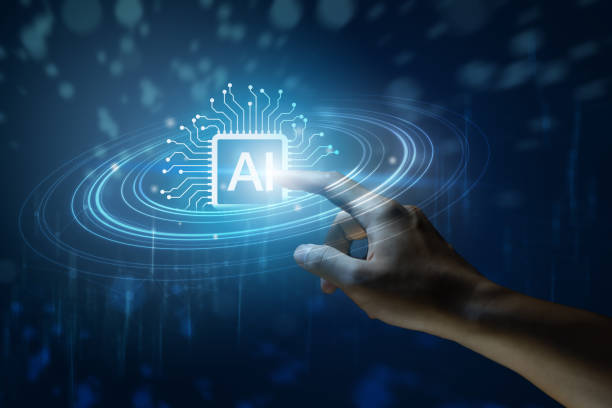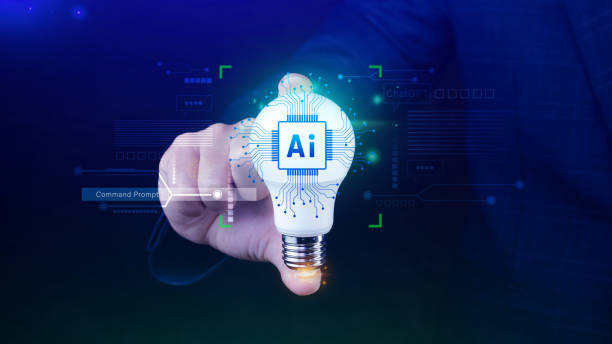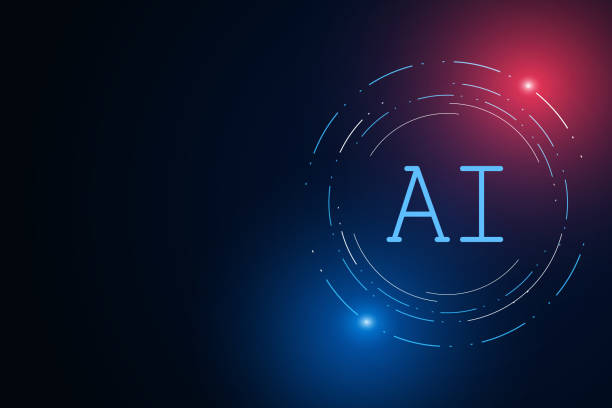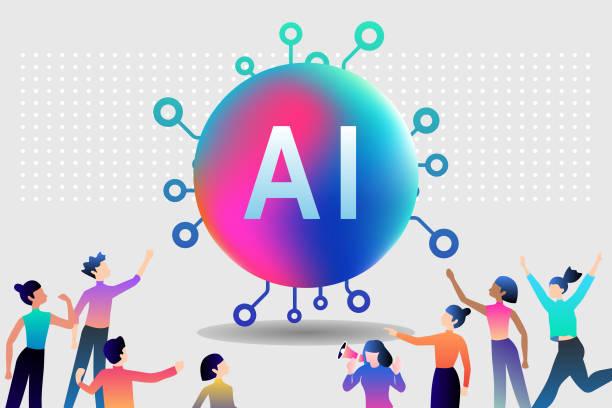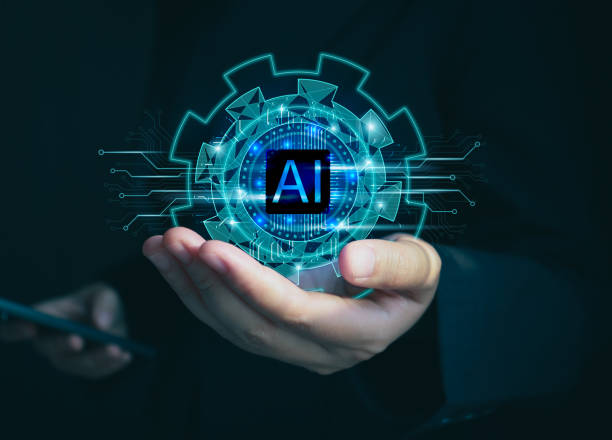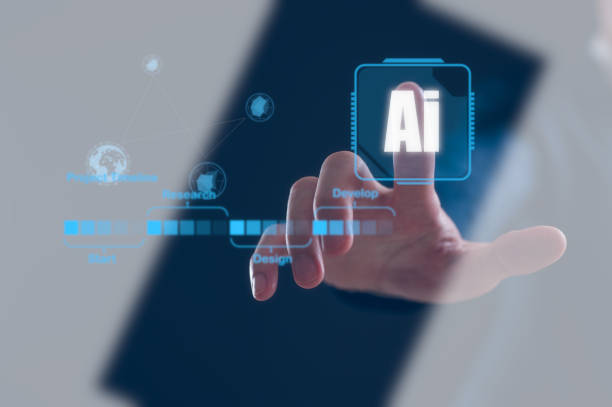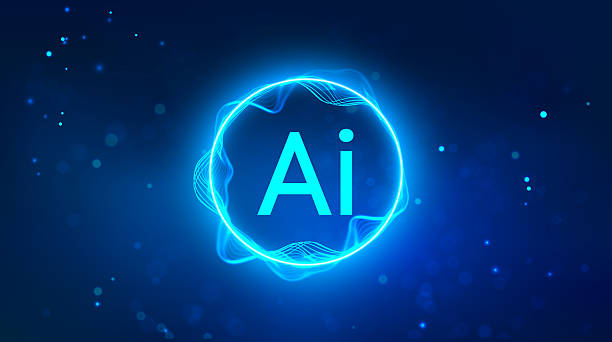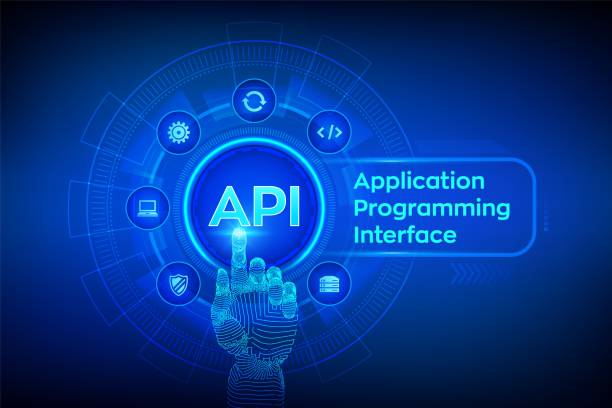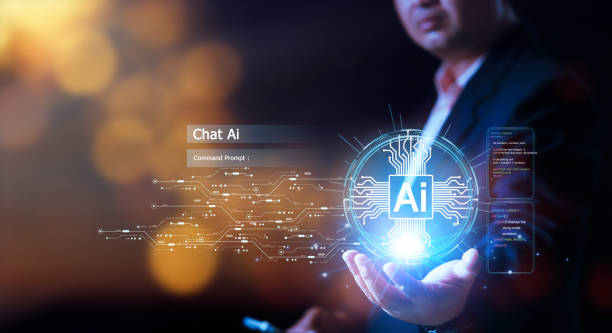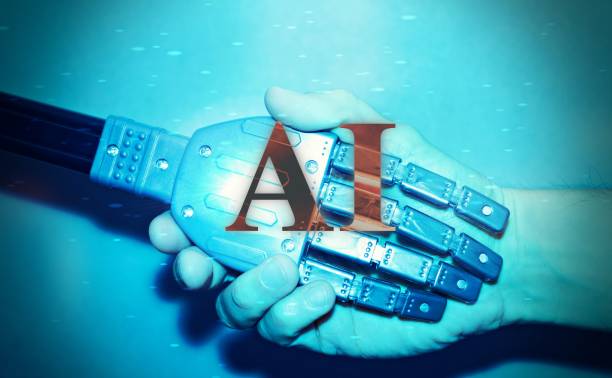What is an Artificial Intelligence Robot? Definition and Applications
In today’s world, the term artificial intelligence (AI) is increasingly heard.
One of the most attractive and widely used branches of AI is artificial intelligence robots.
These robots are actually computer programs or physical machines that are capable of performing tasks that typically require human intelligence.
These tasks include learning, reasoning, problem-solving, understanding natural language, and even creativity.
Applications of artificial intelligence robots are very broad and affect almost all industries.
Common applications include:
- Customer Service: Chatbots and virtual assistants that answer customer questions and solve their problems.
- Healthcare: Robots that assist doctors in complex surgeries or distribute needed medications.
- Industry: Robots that automatically perform repetitive tasks on factory production lines.
- Education: Educational robots that help students learn various concepts.
- Entertainment: Toy robots that interact with and entertain children.
In fact, an artificial intelligence robot is a bridge between the digital and physical world that makes it possible to do things that were previously impossible.
#future #technology
Don’t have a company website yet and are missing out on online opportunities? With professional corporate website design by Rasaweb,
✅ Double your business credibility
✅ Attract new customers
⚡ Free consultation for your company website!
The Main Components of an Artificial Intelligence Robot
An artificial intelligence robot consists of several key components that work together to enable various tasks.
These components include:
- Sensors: Sensors collect information from the surrounding environment.
This information can include images, sounds, temperature, pressure, and other relevant data. - Processor: The processor (usually a computer) analyzes the information collected by the sensors and makes the necessary decisions.
- Artificial Intelligence Algorithms: These algorithms help the robot learn, reason, and solve problems.
Machine learning algorithms, neural networks, and natural language processing are among the common algorithms in artificial intelligence robots. - Actuators: Actuators execute the processor’s commands and cause the robot to move or perform a specific action.
These actuators can include motors, arms, wheels, and other mechanical parts. - Power Supply: The power supply provides the energy needed to operate all components of the robot.
Click here to preview your posts with PRO themes ››
The combination of these components allows the artificial intelligence robot to interact with the surrounding environment, process information, and perform various tasks.
The more advanced and efficient these components are, the more complex and accurate tasks the robot will be able to perform.
Types of Artificial Intelligence Robots Based on Application
Artificial intelligence robots are divided into different categories based on their applications.
Some of the most common types include:
- Industrial Robots: These robots are used on factory production lines to perform repetitive and heavy tasks such as welding, painting, and assembly.
Industrial artificial intelligence robots significantly increase productivity by increasing speed and accuracy. - Service Robots: These robots are used in service environments such as hospitals, hotels, and restaurants to perform tasks such as cleaning, delivering food, and providing information to customers.
- Medical Robots: These robots assist doctors in surgeries, rehabilitation, and patient care.
Medical artificial intelligence robots can increase surgical accuracy and shorten patients’ recovery time. - Military Robots: These robots are used in reconnaissance operations, bomb disposal, and transportation of military equipment.
- Educational Robots: These robots help students learn various concepts and strengthen their problem-solving skills.
- Home Robots: These robots are used to perform daily tasks such as cleaning, gardening, and caring for the elderly at home.
Choosing the right type of artificial intelligence robot depends on the specific needs and requirements of each application.
Factors such as cost, accuracy, speed, and reliability should be considered when choosing the right robot.
| Robot Type | Application | Advantages | Disadvantages |
|---|---|---|---|
| Industrial | Welding, Assembly | Increased speed and accuracy | High cost, requires maintenance |
| Service | Cleaning, Food Delivery | Improved efficiency, reduced costs | Limitations in performing complex tasks |
| Medical | Surgery, Rehabilitation | Increased surgical accuracy, reduced recovery time | Very high cost, requires expertise |
Advantages of Using Artificial Intelligence Robots
Using artificial intelligence robots has numerous benefits that can help improve performance and increase productivity in various industries.
Some of the most important benefits include:
- Increased Accuracy and Speed: Artificial intelligence robots can perform tasks more accurately and quickly than humans.
- Reduced Costs: By automating repetitive tasks, robots can reduce labor costs.
- Improved Safety: Robots can work in dangerous and high-risk environments instead of humans and prevent them from being harmed.
- Increased Productivity: Robots can work around the clock and without fatigue, significantly increasing productivity.
- Improved Quality: Robots can perform tasks with consistent quality and without errors.
In general, the use of artificial intelligence robots can help organizations become more competitive and improve their performance.
However, it is important to note that the use of robots requires careful planning and initial investment.
Do you have an online store but your sales are not as expected? Rasaweb solves your problem forever with professional online store design!
✅ Significantly increase conversion rates and sales
✅ Exceptional user experience for your customers
⚡ Click to get a free consultation with Rasaweb!
Challenges Facing Artificial Intelligence Robots
Despite its numerous advantages, artificial intelligence robots also face numerous challenges.
Some of the most important of these challenges include:
- High Cost: Designing, building, and maintaining artificial intelligence robots can be very expensive.
- Complexity: Developing and programming artificial intelligence robots requires high knowledge and expertise.
- Ethical Issues: The use of artificial intelligence robots can raise several ethical issues, such as replacing human labor and protecting privacy.
- Security: Artificial intelligence robots may be vulnerable to cyber attacks and be misused.
- Limitations: Artificial intelligence robots still have limitations in some areas, such as understanding emotions and performing creative tasks.
To overcome these challenges, more research and development is needed in the field of artificial intelligence and robotics.
Also, it is necessary to develop appropriate laws and regulations for the use of artificial intelligence robots to prevent misuse of this technology.
What Will the Future of Artificial Intelligence Robots Be?
The future of artificial intelligence robots is very bright and full of potential.
With the ever-increasing advances in artificial intelligence and robotics, robots are expected to play a much more important role in our lives in the future.
Some predictions about the future of artificial intelligence robots include:
- Expanding Applications: Robots will be used in more industries and areas in the future.
- Increased Intelligence: Robots will be able to perform more complex tasks and make better decisions.
- Better Interaction with Humans: Robots will be able to interact with humans more naturally and effectively.
- Lower Prices: With increased production and improved technology, the price of robots will decrease, and their use will become more affordable for the general public.
However, it is important to note that the development of artificial intelligence robots must be carried out responsibly and considering ethical and social issues to prevent potential problems.
Artificial intelligence robots, if developed correctly, can be very useful.
Machine Learning and Its Role in Intelligent Robots
Machine Learning is a subset of artificial intelligence that allows computers to learn from data without explicit programming.
This technology plays a vital role in the development of intelligent robots.
In intelligent robots, machine learning enables them to:
- Recognize Patterns: Robots can recognize patterns in data and use them for prediction and decision-making.
- Adapt to the Environment: Robots can adapt to changes in the environment and optimize their performance.
- Improve Performance: Robots can improve their performance over time with more experience.
There are various machine learning algorithms for training artificial intelligence robots, including supervised learning, unsupervised learning, and reinforcement learning.
The choice of the right algorithm depends on the type of task that the robot must perform.
| Type of Machine Learning Algorithm | Description | Application in Robots |
|---|---|---|
| Supervised Learning | Training using labeled data | Object recognition, data classification |
| Unsupervised Learning | Training using unlabeled data | Data clustering, dimensionality reduction |
| Reinforcement Learning | Learning through trial and error | Robot motion control, playing games |
Artificial Intelligence Robot Programming Languages and Tools
Programming artificial intelligence robots requires the use of specific programming languages and tools.
Some of the most common programming languages used in this field include:
- Python: Python is a high-level and multi-purpose programming language that is very popular for developing artificial intelligence robots due to its simplicity and readability.
- C++: C++ is a powerful and efficient programming language that is used to develop robots that require high performance.
- Java: Java is an object-oriented programming language that is used to develop Java-based robots.
- ROS: (Robot Operating System) is a software framework for developing robots that provides various tools and libraries for robot programming.
In addition to programming languages, other tools are also used to develop artificial intelligence robots, such as Integrated Development Environments (IDEs), robot simulators, and artificial intelligence libraries.
Are you losing business opportunities due to an outdated website? With Rasaweb, solve the problem of not attracting potential customers through the website forever!
✅ Attract more high-quality leads
✅ Increase brand credibility in the eyes of customers
⚡ Get a free corporate website design consultation
Ethical Issues Surrounding Artificial Intelligence Robots
The development and use of artificial intelligence robots raises several ethical issues.
Some of the most important of these issues include:
- Replacing Human Labor: The use of robots can lead to job losses and increased unemployment.
- Protecting Privacy: Robots can collect a lot of information about people that may be misused.
- Accountability: In the event of an accident caused by a robot, determining responsibility is difficult.
- Discrimination: Robots may make discriminatory decisions due to biased training data.
- Control: Ensuring that robots always act in accordance with human values is challenging.
To solve these issues, there is a need to develop ethical laws and regulations for the development and use of artificial intelligence robots.
Also, it is necessary to consider human values in the design and programming of robots.
Artificial intelligence robots can be dangerous if not properly controlled.
Artificial Intelligence Robots and the Future of Employment
One of the most important concerns about artificial intelligence robots is their impact on the future of employment.
Many experts believe that robots can eliminate many jobs, especially those that are repetitive and routine.
However, others believe that artificial intelligence robots can also create new job opportunities.
For example, the need for specialists to design, build, maintain, and program robots will increase.
To prepare for the future of employment, it is necessary for people to learn new skills that robots cannot replace, such as critical thinking, problem-solving, creativity, and communication skills.
Also, governments and organizations should provide programs for training and retraining the workforce so that they can adapt to changes in the labor market.
Artificial intelligence robots reduce costs if they replace the workforce.
Frequently Asked Questions
| Row | Question | Answer |
|---|---|---|
| 1 | What is an artificial intelligence robot? | An artificial intelligence robot is a machine capable of understanding, reasoning, learning, and problem-solving, and can perform complex tasks with relative autonomy. |
| 2 | What are the most important applications of artificial intelligence robots? | The main applications include industrial production, customer service (chatbots), medicine and surgery, self-driving transport, space exploration, and military affairs. |
| 3 | What is the main difference between an artificial intelligence robot and a regular robot? | A regular robot only follows programmed instructions, while an artificial intelligence robot can learn from data, make decisions, and adapt to new environments. |
| 4 | How do artificial intelligence robots learn? | They identify patterns and improve their performance through machine learning algorithms (such as deep learning, reinforcement learning) and processing vast amounts of data. |
| 5 | Can artificial intelligence robots have emotions? | Currently, artificial intelligence robots do not have real emotions in the human sense. They can mimic or recognize emotions, but they do not understand and experience them. |
| 6 | What are the current limitations of artificial intelligence robots? | Limitations include the need for large amounts of data, the inability to understand abstract concepts, the lack of real creativity, ethical issues, and the challenges of generalizability in new environments. |
| 7 | What is the role of artificial intelligence in the development of humanoid robots? | Artificial intelligence helps humanoid robots walk, maintain balance, understand their surroundings, interact with humans, and perform complex tasks. |
| 8 | How is the future of artificial intelligence robots predicted? | Artificial intelligence robots are predicted to become smarter, more autonomous, and capable of performing more complex tasks in daily life and industry, and their interaction with humans will increase. |
| 9 | Can artificial intelligence robots replace all human jobs? | It is unlikely that all human jobs will be replaced. Robots will take over many repetitive and dangerous tasks, but jobs that require creativity, empathy, and ethical judgment will remain. |
| 10 | What ethical and social challenges are raised by the expansion of artificial intelligence robots? | Challenges include issues related to privacy, data security, ethical decision-making by robots, impact on employment, and accountability in the event of an error. |
And other services of Rasa Web Advertising Agency in the field of advertising
Smart Google Ads: An effective tool for user interaction through Google ad management.
Smart SEO: A combination of creativity and technology for user interaction by customizing the user experience.
Smart Direct Marketing: A combination of creativity and technology for campaign management by optimizing key pages.
Smart Data Analysis: A combination of creativity and technology for digital branding by custom programming.
Smart Marketplace: Designed for businesses looking to increase sales by customizing the user experience.
And more than a hundred other services in the field of internet advertising, advertising consulting, and organizational solutions
Internet Advertising | Advertising Strategy | Advertorials
Sources
What is an Artificial Intelligence Robot and What are Its Types?
,What is an Artificial Intelligent Robot?
,What are Intelligent Robots? 🤖 Features of Intelligent Robots
,Intelligent Robots, the Most Important Strategic Weapon of the Contemporary World
? Are you ready to take your business to the peak in the digital world? Rasaweb Afarin, a leading digital marketing agency, with expertise in search engine optimization (SEO), content marketing, and responsive website design, provides innovative and comprehensive solutions for your growth and visibility. We help you achieve your business goals and outpace your competitors with a strong and influential presence online.
📍 Tehran, Mirdamad Street, next to the Central Bank, South Kazerun Alley, Ramin Alley, No. 6

